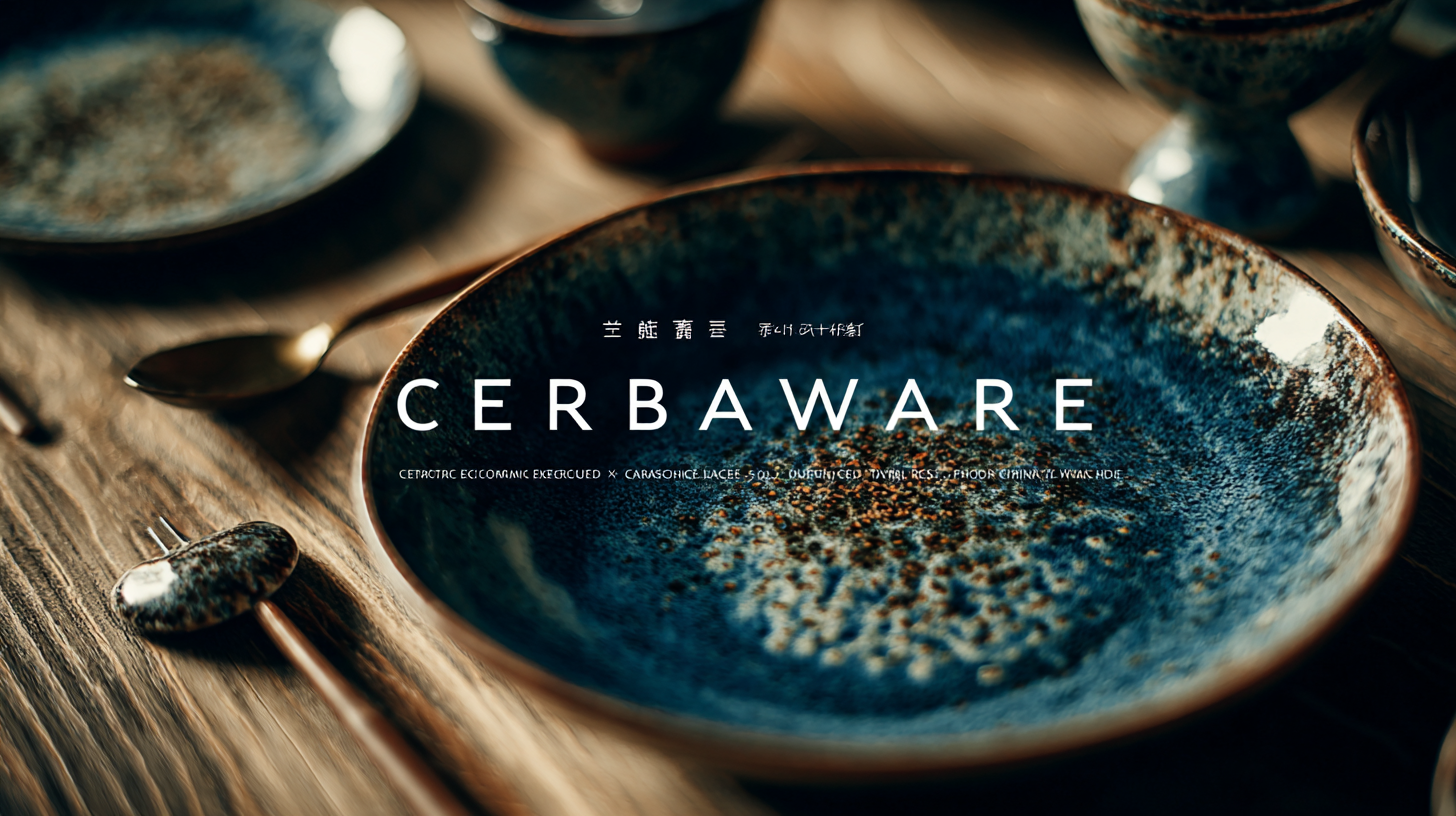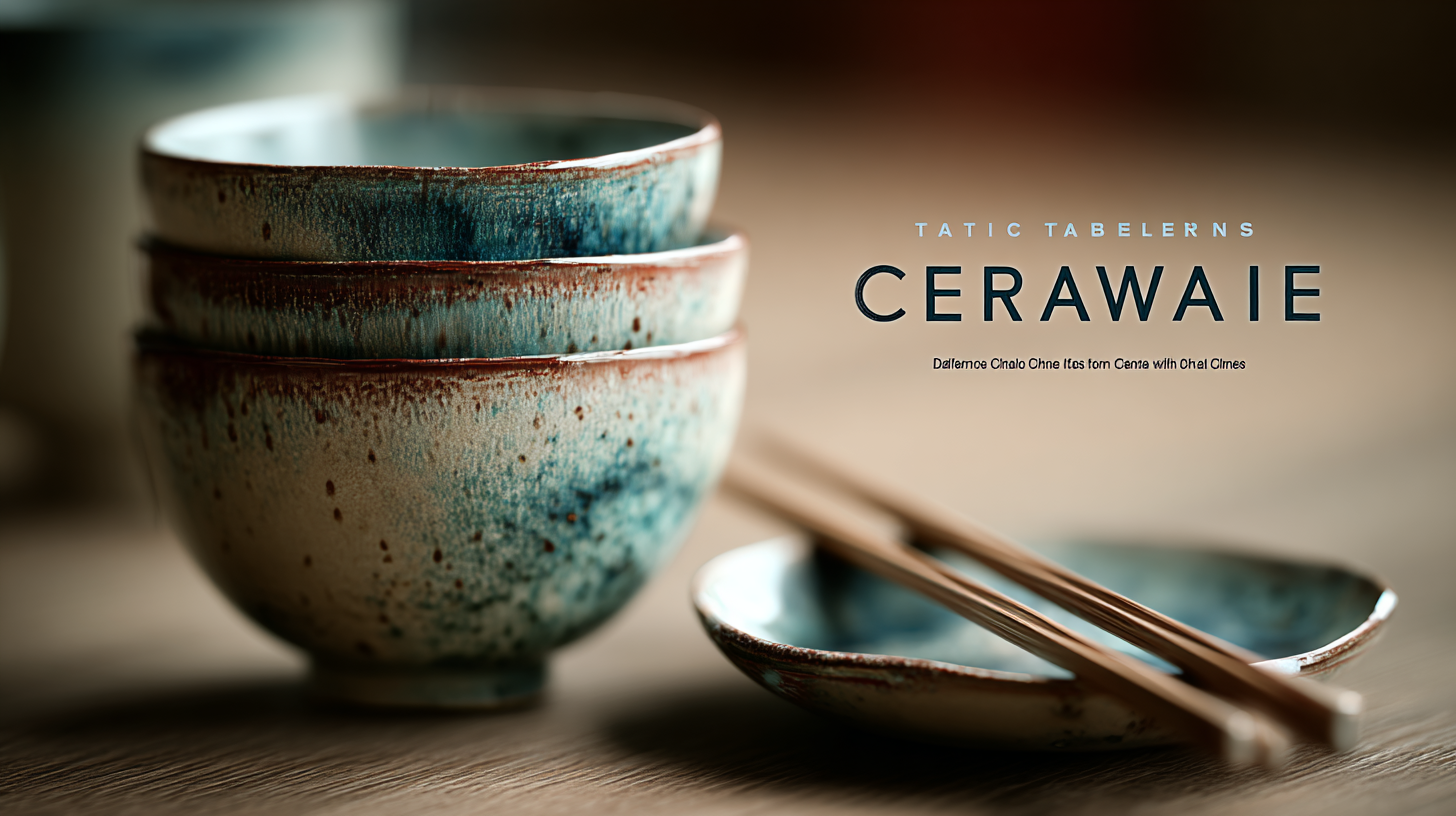

In recent years, the demand for high-quality Ceramic Tableware has surged globally, reflecting a growing appreciation for fine dining experiences that resonate with cultural heritage and culinary artistry. According to a report by Market Research Future, the global ceramic tableware market is projected to reach a valuation of approximately $24 billion by 2025, driven by the rising trend of home dining and the desire for aesthetic dining solutions. Chinese craftsmanship, known for its exquisite attention to detail and innovative designs, plays a pivotal role in this market expansion. As consumers increasingly seek sustainable and elegant options for their dining needs, ceramic tableware produced in China stands out as an exemplary choice that combines tradition and modernity, catering to diverse tastes across the globe. This blog will delve into industry trends, technological advancements, and the myriad benefits of incorporating Chinese ceramic tableware into dining experiences worldwide.

The timeless appeal of Chinese ceramic tableware in global dining is underscored by centuries of craftsmanship that blends functionality with artistry. Data from the National Ceramic Association highlights that the global ceramic tableware market is projected to reach $20 billion by 2025, with a significant portion attributed to the rising demand for high-quality, aesthetically pleasing dining experiences. China's rich heritage in porcelain production, especially from regions like Jingdezhen, exemplifies the perfect union of tradition and innovation, attracting discerning customers across the globe.
Moreover, the allure of Chinese ceramic tableware lies in its diversity and versatility. According to a market research report by Allied Market Research, the growth of the hospitality industry and the increasing trend of home dining are contributing to the demand for elegant tableware. Chinese ceramics, known for their unique glazes and intricate patterns, elevate meal presentations, making them essential for both casual gatherings and fine dining establishments. As more people seek to enhance their dining experiences, the role of beautifully crafted ceramic pieces continues to be paramount in the culinary landscape.

Ceramic tableware, especially that crafted in China, epitomizes sustainability and eco-friendliness, making it an excellent choice for global dining experiences. The production of ceramic tableware has significantly lower carbon emissions compared to disposable plastic options, with research indicating that ceramic emits just 9.55 g of CO2 per meal, a stark contrast to the 597 g from disposable paper tableware. Embracing ceramic is not only about enjoying its aesthetic appeal but also about making an environmentally conscious decision that supports artisan craftsmanship.
 When selecting ceramic tableware, consider these tips for a sustainable choice:
When selecting ceramic tableware, consider these tips for a sustainable choice:
Handcrafted Chinese ceramics have garnered global acclaim for their exquisite craftsmanship and unique designs. The ongoing interest in these art pieces was highlighted at the recent opening of the "Tian Gong Kai Wu" exhibition at the 2025 London Craft Week. This event emphasizes the rich heritage of Chinese artisanal skills that influence contemporary dining experiences. According to industry reports, the global market for tableware is expected to reach USD 60 billion by 2025, with ceramics making up a significant portion of that growth. This rise is attributed to a growing appreciation for handmade goods that merge tradition with modern aesthetics.
When selecting ceramic tableware, consider the quality of craftsmanship that reflects both functionality and artistry. Look for pieces that demonstrate intricate hand-painting or traditional glazing techniques—these often indicate higher quality and authenticity. Additionally, keep in mind that handcrafted ceramics can elevate your dining experience by providing not just utility but also conversation starters for your guests.
Embracing the beauty of handcrafted ceramics can transform any dining occasion. Investing in unique pieces not only supports artisans but also brings a touch of elegance to your table settings. As the demand for artisanal products rises, incorporating handcrafted tableware into your home can enhance your overall dining experience and showcase the rich cultural narratives behind these exquisite creations.
The culinary world continues to evolve, with ceramic tableware playing a pivotal role in enhancing the dining experience. The elegance of ceramic designs not only elevates food presentation but also adds a touch of sophistication to any meal. According to industry reports, the global ceramic dinnerware market is projected to reach $13.7 billion by 2027, highlighting a growing appreciation for high-quality materials that seamlessly blend form and function.
As dining trends shift towards more elaborate presentations, the demand for exquisite ceramic tableware is rapidly increasing. Recent reports indicate that consumers are becoming more discerning, seeking tableware that not only serves a practical purpose but also expresses personal style. This trend is mirrored in the rise of innovative designs showcased at various design festivals, where manufacturers infuse creativity and artistry into functional pieces. In a world where aesthetics matter, beautiful ceramic tableware is not just a luxury but a necessity for those looking to make a statement at their dining tables.
Ceramic tableware holds a special place in Chinese dining culture, reflecting centuries-old traditions and artistic craftsmanship. According to a report by the China National Light Industry Council, the production of ceramic tableware in China is a multibillion-dollar industry, representing nearly 30% of the global market. This significant share illustrates the country’s dedication to refining the quality and aesthetic appeal of its ceramics, making them not just functional items but also symbols of cultural heritage.
The intricate designs and motifs often featured on Chinese tableware further enhance their cultural significance. For instance, traditional patterns like the blue-and-white porcelain showcase not only the superb craftsmanship but also the philosophical elements of Chinese culture, drawing inspiration from nature and ancient beliefs. A survey conducted by the China Tableware Association highlights that over 85% of consumers view tableware as an essential part of their dining experience, emphasizing the role of ceramics in social gatherings, celebrations, and daily meals. As the global market for tableware continues to grow, the charm and elegance of Chinese ceramics are increasingly being embraced by international dining scenes, enhancing the culinary experience worldwide.
